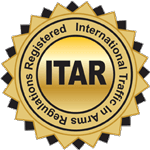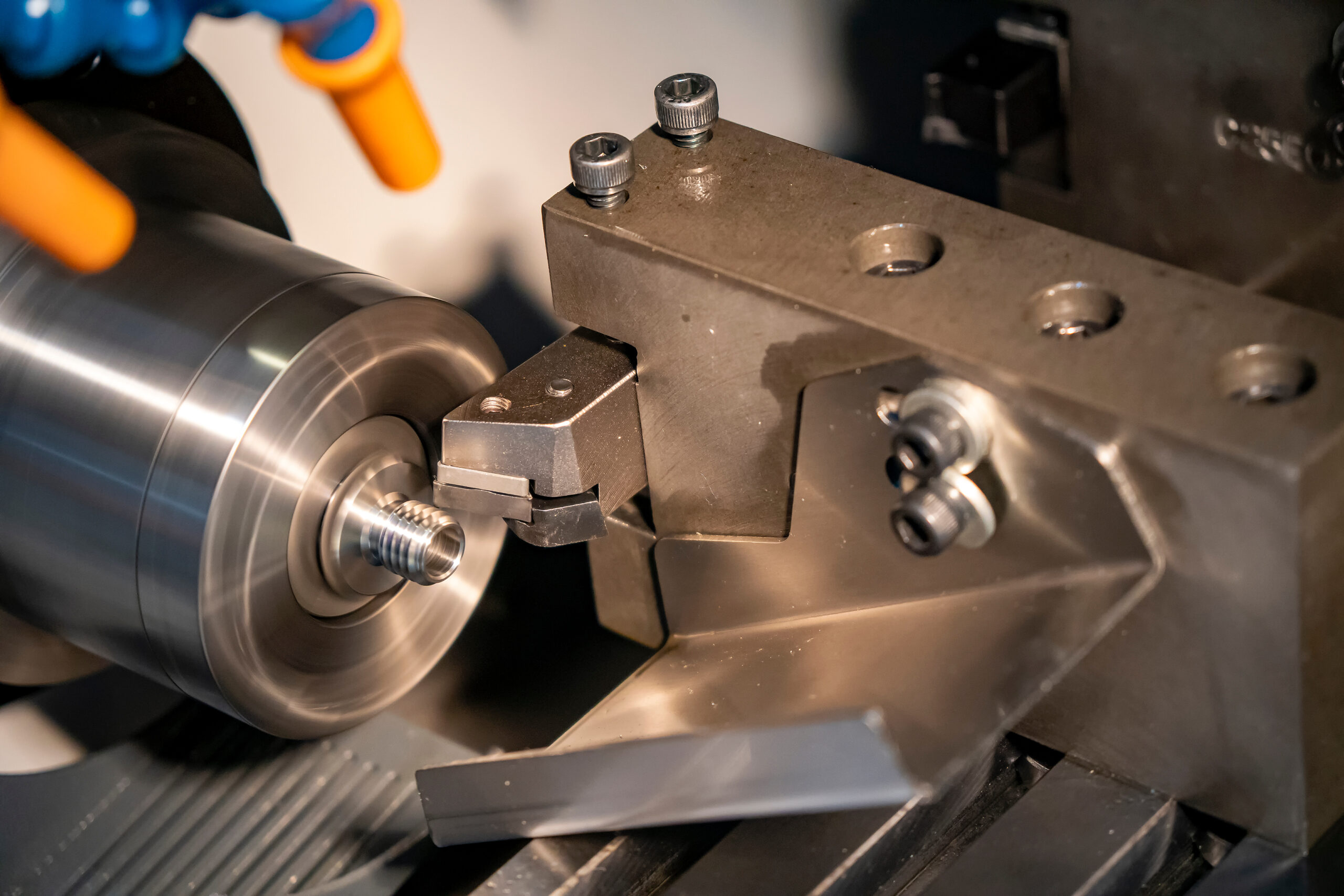Staub manufactures customer parts using threaded metal inserts when the need for solid threads arises in the product development process. Threaded inserts for metal components feature ribbed walls, giving them greater strength and durability when bearing a load. As they don’t need to be reworked once installed, inserts can be used at any point during production, even after coating or painting. For this reason, they’ve become particularly prevalent in aerospace, clean energy, defense, electronics, medical and transportation applications.
With Helicoil inserts, specifications make them particularly useful with soft materials to transfer force and reinforce screw threads. Threaded inserts for metal components come in various configurations, designs, and tooling, with different dimensions that make each type more useful for specific applications.
What Are Threaded Inserts?
Threaded inserts are sleeves featuring a threaded interior that allows a bolt, screw, or threaded fastener to attach one component to another. They’re helpful in devices that require disassembly and reassembly or when using softer materials, mainly when it involves a load-bearing joining.
When it comes to fasteners, they must be well-suited to the application and the materials with which one is working. One type of fastener used frequently due to its versatility is a blind threaded insert. For metals of varying thicknesses, ceramics, or plastics, these fasteners work well when connecting components to castings, extrusions, housings, or tubes. Stripped threads can additionally be repaired with blind threaded inserts—metal prototypes are also utilized to improve the performance of joined components.
Using Threaded Inserts for Metal Parts
Threaded inserts are cylindrical metal components, commonly made of brass, steel, and aluminum, with a pre-formed thread of the specified pitch, depth, and size along the cylinder’s ID (inner walls). The insert is embedded into a larger part. It resists loosening forces because of knurled, knobbed, or threaded external surfaces designed to mate with and grip the “nominal” material of the part. A mating insert is the best choice if the part’s application includes unscrewing and re-inserting a bolt or other threaded connection frequently.
Before choosing which type of threaded inserts for metal to use in an application, it’s essential to consider its intended function. A good choice would involve Helicoil inserts if an application were frequently disassembled and reassembled. Specifications for these and other threaded inserts for metal parts differ depending on the application. Still, using these fastener aids often lengthens the lifespan of components that feature threaded holes.
Threaded inserts are made from high-grade stainless steel wiring with a cross-section shaped like a diamond. It mechanically rolls into a thread shaped like a spring. Conventional threaded inserts have a larger diameter than the threaded hole into which they’re installed. During installation, the threaded sleeve gradually compresses and tightens until it fits in the hole.
Once installed, the threaded insert’s elasticity causes it to rebound. This expanding force causes the insert to become permanently fixed within the threaded hole. As the threaded insert’s diameter is larger, the contact surface of the insert is also larger, making it stronger than the original thread.
Ready to automate your next job?
VIEW OUR EQUIPMENTBenefits of Threaded Inserts for Metal Components
Blind threaded inserts can be installed from one side, enabling faster installation, especially in a production line. They offer a stronger alternative to weld nuts and tapped holes and provide a stronger bond than self-tapping screws. Threaded inserts are usually the strongest and least time-consuming fasteners used in any manufacturing setting, especially because they were designed for automation.
Some benefits of using threaded inserts for metal components include the following:
- Enhancing connection strength and conditions to provide better performance at the point of connection; wire thread inserts for metal parts allow more significant tightening with a lesser chance of misalignment or slippage, as they’re made from softer metals like aluminum or magnesium.
- Improving wear resistance for connected components and lengthening the service life of the thread, especially for components often taken apart.
- Preventing fastening devices from loosening is a requirement for aerospace and other applications to ensure parts remain attached.
- Providing additional strength to load-bearing areas when the diameter of screw holes can’t be increased directly.
- Repairing internally threaded holes that have been damaged to glean better tightening performance while continuing to use the original holes; helps prevent thread damage that could require the disposal of entire components.
Helicoil Inserts: Specifications, Types & Installation
Helicoil inserts repair stripped threads in lighter or softer materials like aluminum, magnesium, plastics, wood, and zinc. Even when used frequently, threaded holes within a workpiece can be reinforced to boost its integrity through Helicoil inserts. Specifications vary, but these inserts lengthen the lifespan of components, reducing the wear within threaded holes.
Industries that utilize Helicoil inserts include:
- Some aerospace sectors
- Automotive industry
- Defense industry
- Electrical engineering
- Manufacturing
- Medical and healthcare industry
- Products for the transportation industry
- Telecommunications
Helicoil inserts are used for a variety of applications in these industries. For example, in the automotive repair industry, spark plugs may require inserts to restore pre-drilled threads when they’ve been cross-threaded or over-torqued when fixing an engine’s cylinder head. As they also help retain a tight seal, they’re also helpful for drills, gear housings, printing presses, and other continuously generating vibrations.
Specifications & Manufacturer Designs
Specifications for Helicoil inserts differ according to industry. Manufacturers fabricate different types of inserts for metals or other materials to perform specific tasks. Four basic types of Helicoil inserts with specifications are:
- Tanged free-running coil: Made from stainless steel and designed to resist corrosion, these inserts can quickly repair damaged threads; these meet both aerospace and military specifications.
- Tang-free free-running coils: Though similar to the tanged variety, these helicoils have no tang on the bottom, and for screw-in installations, use an insert-drive notch instead, eliminating the need to remove tangs before bolts are inserted.
- Tanged screw lock coils: This design features a straight section of coil that flexes outward, putting pressure on the bolt and preserving torque to secure the bolt in place; these work well in applications involving a great deal of vibration by maximizing the contact area between the thread’s flanks, to which pressure is applied.
- Tang-free screw lock coils: Similar to tanged screw lock coils, this tang-free variety utilizes a driving notch when installed.
Although insert specifications allow for both tang and tang-free designs, tang-free types remove one step – tang removal – from the process. This saves labor costs and eliminates the need to retrieve removed tangs from machinery. Other varieties, including branded Helicoil inserts, have their own specifications.
Ready to talk about your next project?
CONTACT US TODAYStaub Precision Machine, Inc.: Machining Threaded Inserts for Metal Parts
Staub doesn’t use them differently, but our methods differ from other manufacturers for installing Helicoil inserts. Specifications we have when installing threaded inserts for metal involve our vast experience with these inserts and the components with which they connect. Staub utilizes methods that reduce the lead time and costs usually associated with such manufacturing.
Through Staub’s automated processes, we ensure each insert’s precise and efficient installation to produce a quality product for customers. This involves using the correct tools and techniques, including equipment for monitoring torque. Staub’s installation process for threaded inserts in metal parts takes a fraction of the time as methods used by other manufacturers. We invite you to contact us today to learn more about Staub’s decades of experience in threaded inserts for aerospace and other applications.



